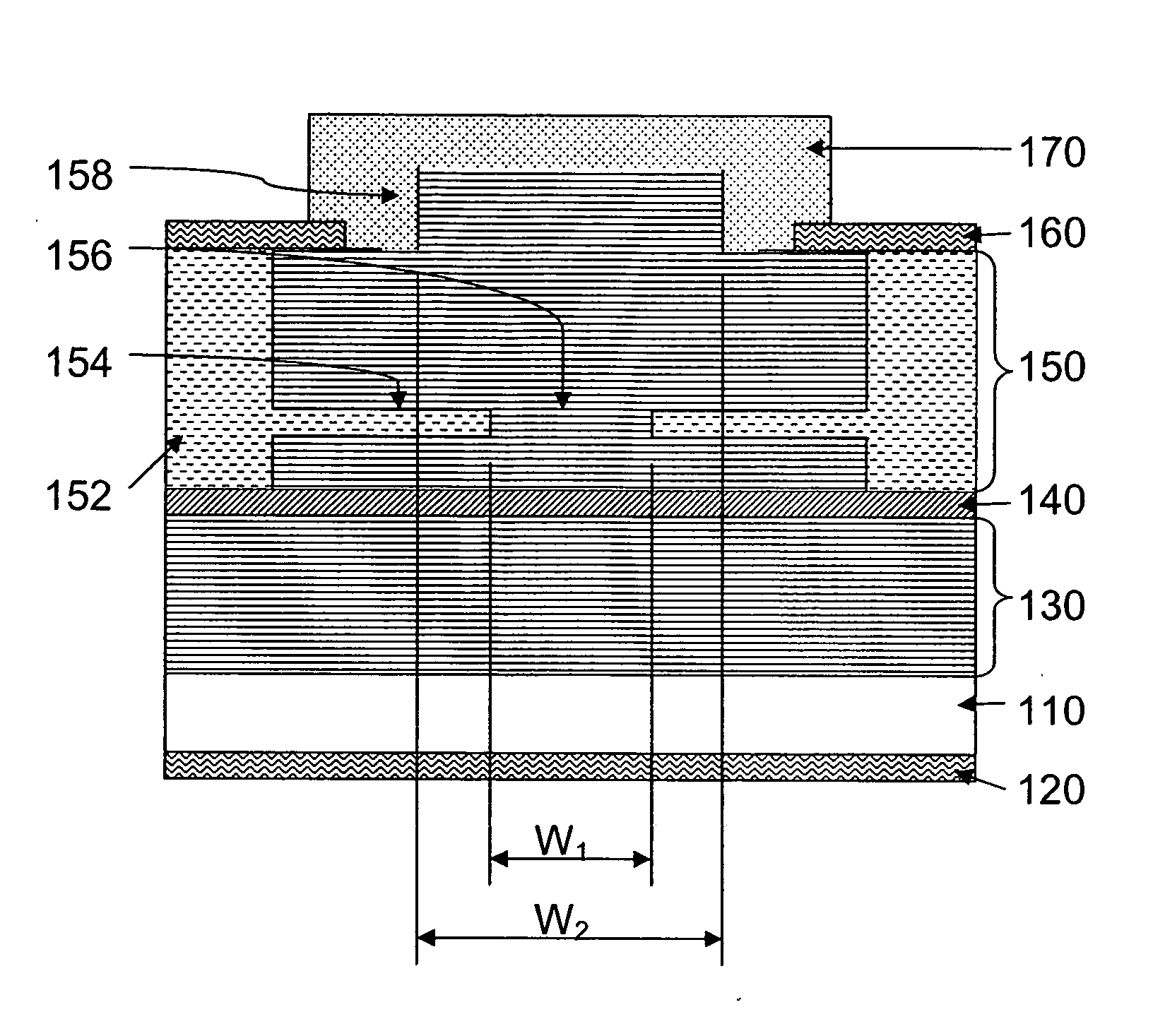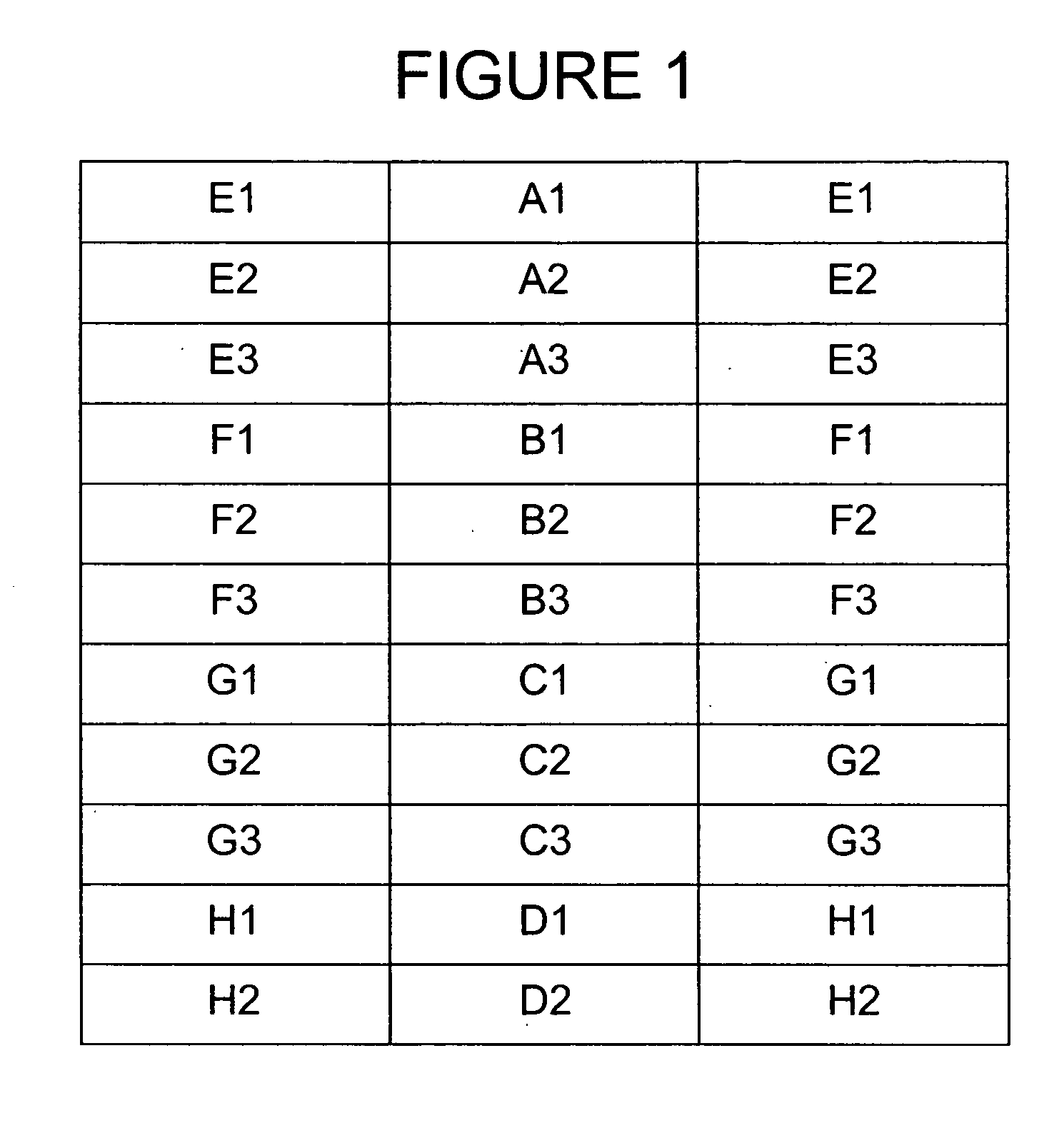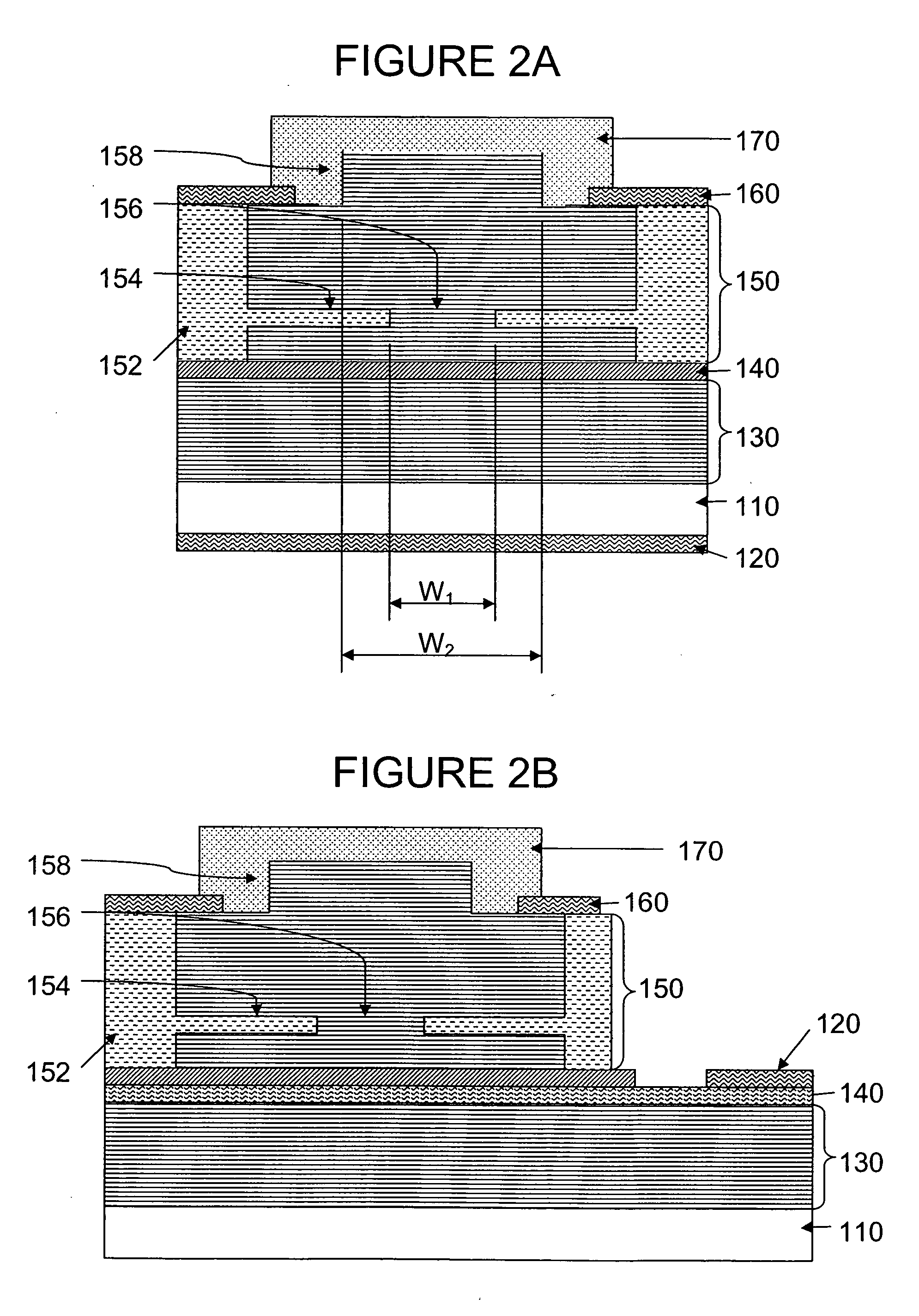Long wavelength vertical cavity surface emitting lasers
a laser and vertical cavity technology, applied in semiconductor lasers, laser details, optical resonator shape and construction, etc., can solve the problems of inability to scale devices to smaller sizes, inability to form significant optical guiding, and large guide siz
- Summary
- Abstract
- Description
- Claims
- Application Information
AI Technical Summary
Benefits of technology
Problems solved by technology
Method used
Image
Examples
first embodiment
[0037] Referring to FIG. 2A, a VCSEL 200 according to the present invention may, for example, include an n-type InP substrate 110, a bottom metallic layer 120 formed on a bottom surface of the substrate 110, a semiconductive n-type bottom distributed Bragg reflector (DBR) 130 formed on an upper surface of the substrate 110, an active region 140 formed on the bottom DBR 130, a semiconductive p-type top DBR 150 formed on the active region 140, a top metallic layer 160 formed on the semiconductor top DBR 150, and a dielectric structure 170 formed on the semiconductor top DBR 150 and, optionally, over the metallic layer 160. In one aspect of the present invention, the interface between the dielectric structure 170 and the semiconductor top DBR 150 may be substantially free of voids. In another aspect of the present invention, the dielectric structure 170 may be provided as a multi-layered dielectric DBR.
[0038] In one aspect of the present invention, the top metallic layer 160 may serve ...
third embodiment
[0054] Further the dielectric structure 170 may be provided as dielectric passivation layer including a single dielectric material. In one aspect of the present invention, the dielectric passivation layer 170 may be formed by substantially any suitable method.
[0055] Referring to FIG. 3B, a VCSEL 500 according to a fourth embodiment of the present invention may, for example, be similar to the VCSEL of the second embodiment previously described with respect to FIG. 2B; however, the semiconductor top DBR 150 may include the at least one intracavity optical aperture 153 discussed above with respect to FIG. 3A.
[0056] Referring to FIG. 4A, a VCSEL 600 according to a fifth embodiment of the present invention may, for example, be similar to the VCSEL of the first embodiment previously described with respect to FIG. 2A; however, adjacent VCSEL devices may be substantially electrically isolated via a trench design 155. In one aspect of the present invention, the trench design 155 may, for e...
seventh embodiment
[0058] Referring to FIG. 5A, a VCSEL 800 according to the present invention may, for example, be similar to the VCSEL previously described with respect to FIG. 3A; however, the semiconductor top DBR 150 may include the trench design 155 discussed above with respect to FIG. 4A.
PUM
 Login to View More
Login to View More Abstract
Description
Claims
Application Information
 Login to View More
Login to View More - R&D
- Intellectual Property
- Life Sciences
- Materials
- Tech Scout
- Unparalleled Data Quality
- Higher Quality Content
- 60% Fewer Hallucinations
Browse by: Latest US Patents, China's latest patents, Technical Efficacy Thesaurus, Application Domain, Technology Topic, Popular Technical Reports.
© 2025 PatSnap. All rights reserved.Legal|Privacy policy|Modern Slavery Act Transparency Statement|Sitemap|About US| Contact US: help@patsnap.com



